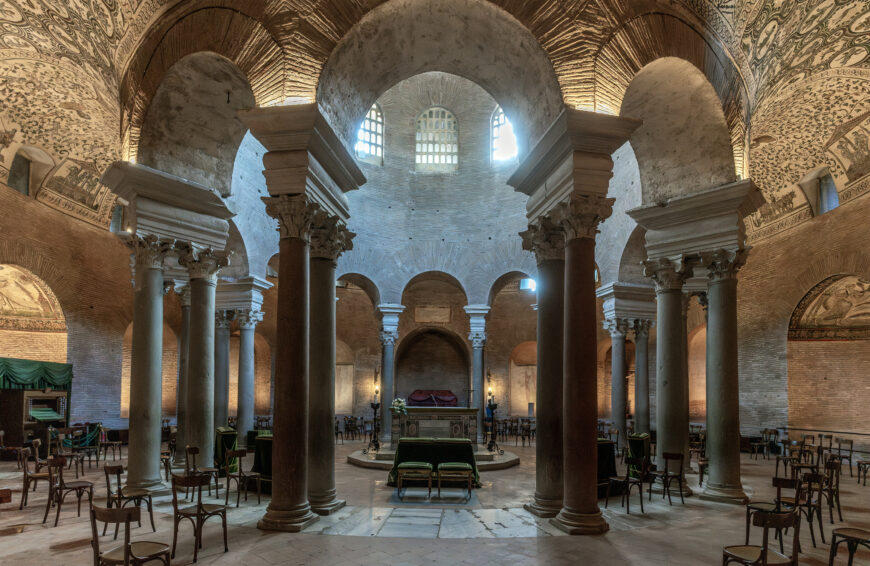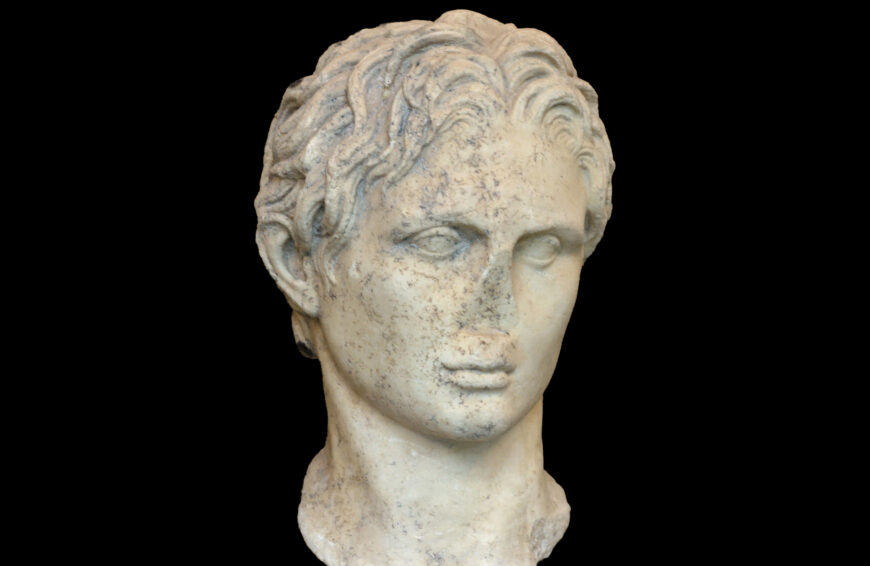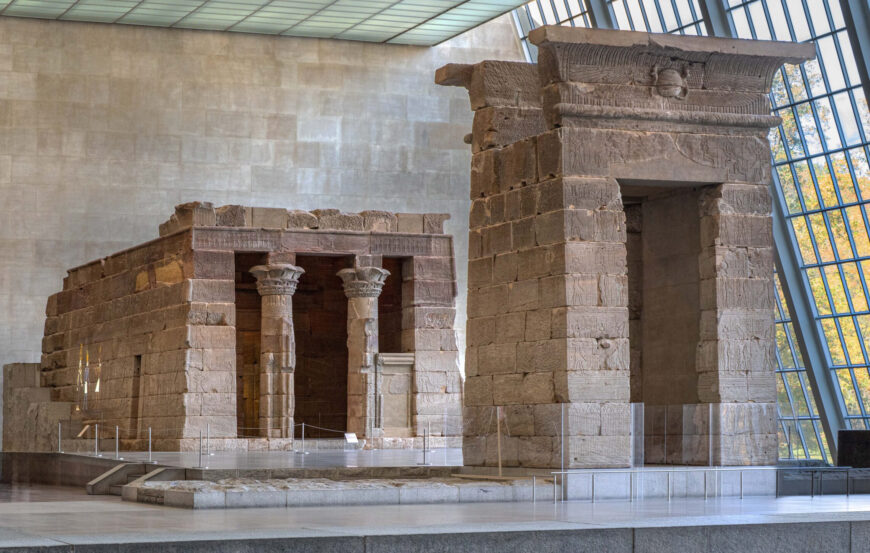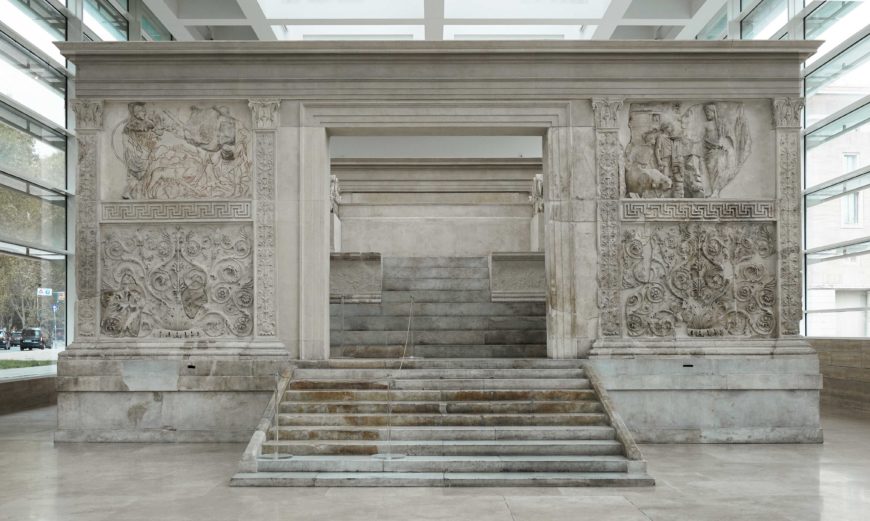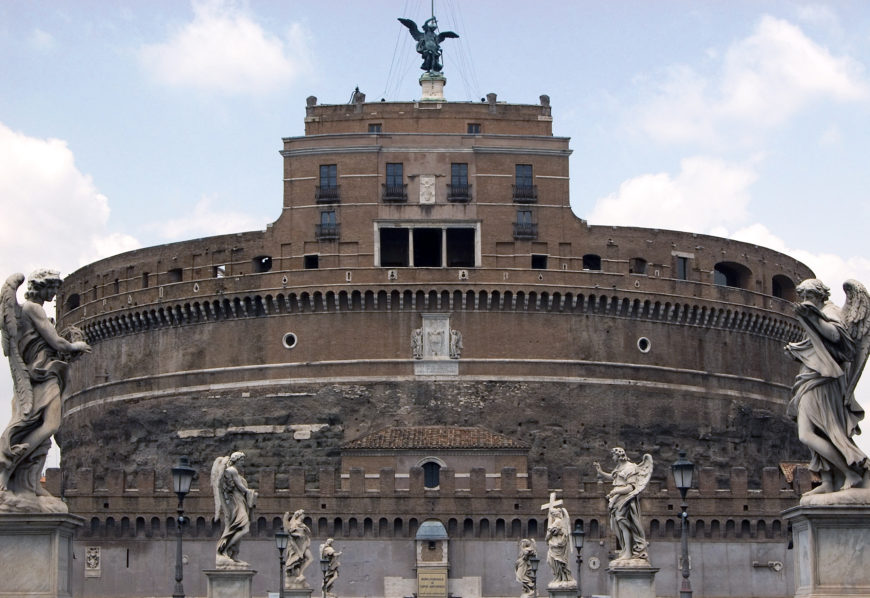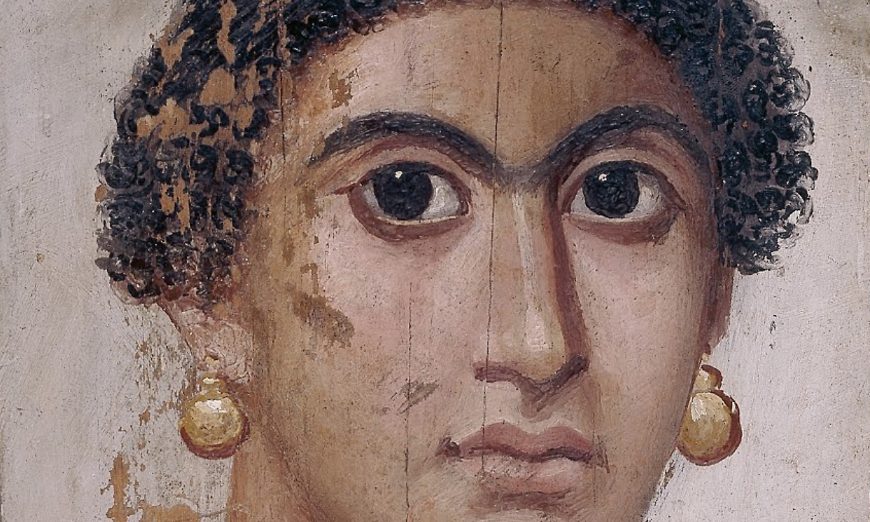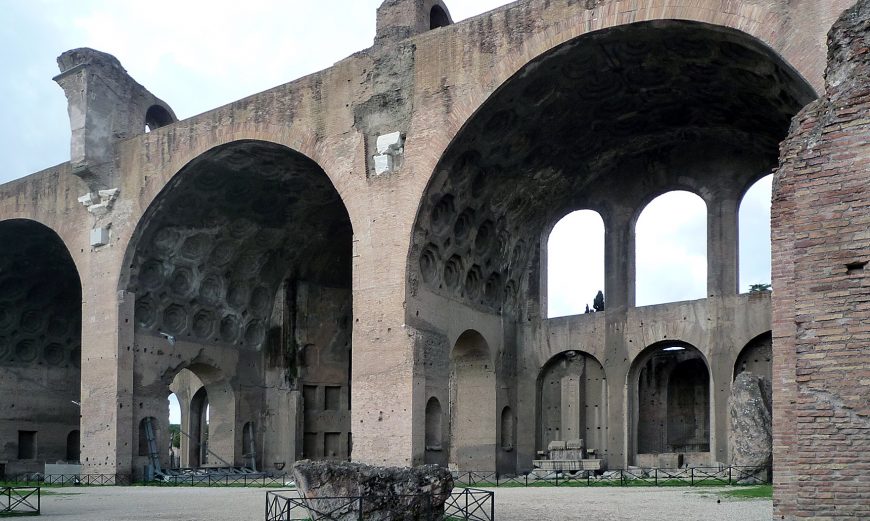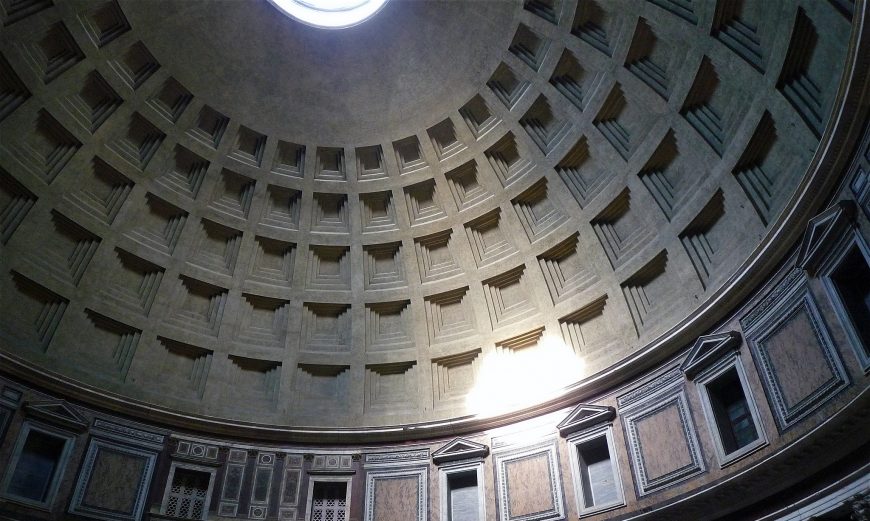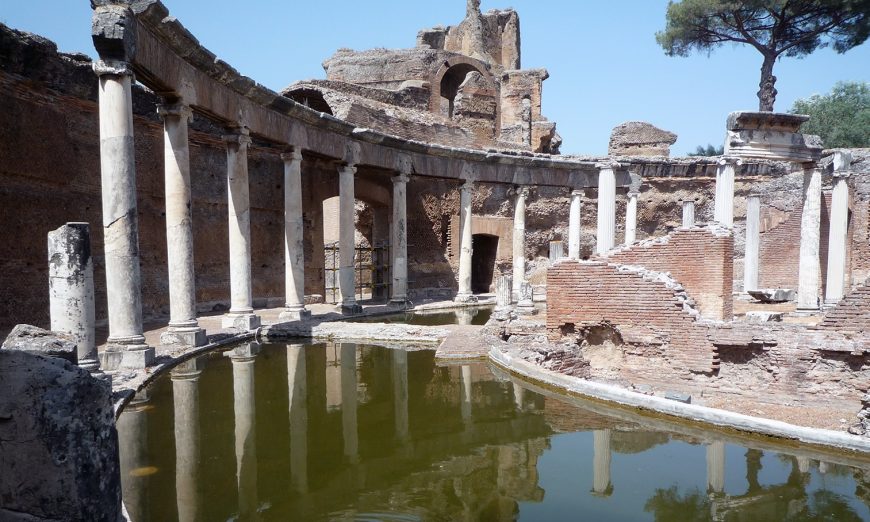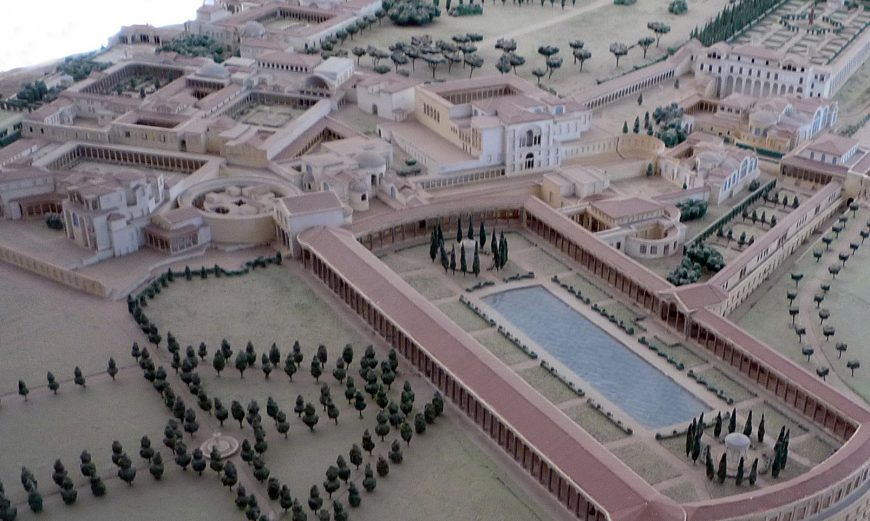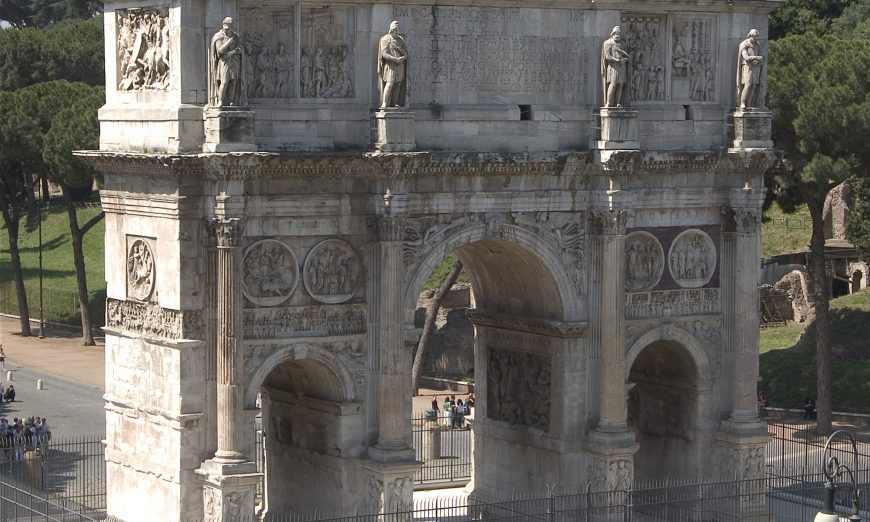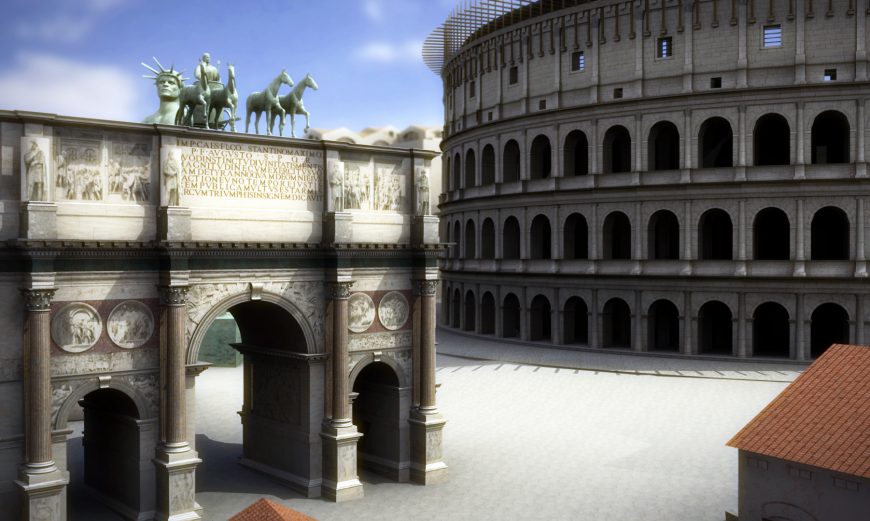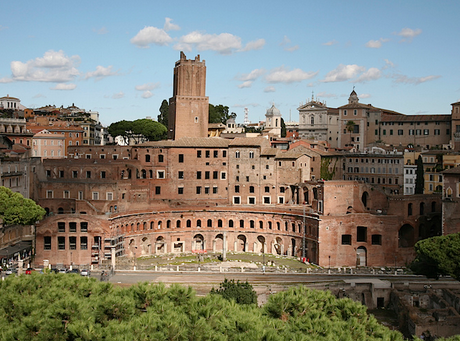Triumphal Arch of Septimius Severus, 203 C.E., marble above a travertine base, roughly 23 x 25 m, Roman Forum, speakers: Dr. Darius Arya, executive director of the American Institute for Roman Culture and Dr. Beth Harris
The Arch of Septimius Severus, portal to ancient Rome
[0:00] [music]
Dr. Beth Harris: [0:05] I’m standing with archaeologist Darius Arya, and we’re standing in Rome in front of the monumental arch of Septimius Severus, the emperor of Rome at the end of the 2nd century and beginning of the 3rd century.
[0:20] This is one of two triumphal arches that survive on the Roman Forum today.
Dr. Darius Arya: [0:25] This is absolutely a spectacular arch. It’s massive, it’s impressive. We’re overlooking it right now by San Martina church, looking down into the Forum.
Dr. Harris: [0:34] This is the civic and religious center of the city of Rome, but also of the Roman Empire.
Dr. Arya: [0:39] Right, so this is in a very important juncture in the Roman Forum. We have in front of that big, impressive Forum piazza. Then, you’re making your way up at the Capitoline Hill, so where’s the arch? It’s right there when you’re leaving the flat area of the piazza, and you’re starting to go up.
[0:57] In the triumphal procession idea, this is the culmination of your parade before you’re getting up to the big temple.
Dr. Harris: [1:04] This arch specifically celebrates the military victory over the Parthians.
Dr. Arya: [1:09] The Parthians are what we today call Iran and Iraq, or you would associate it with the Persian Empire, so the big empire to the east. They were the real nemesis of the Romans. The Romans from the Republican period onward are always looking to the east for great conquest.
[1:24] What we do have here in all of its effect and decoration and the imagery is all about his success, his triumph, and his conquest of a part of the world that now is under the domain of Rome under Septimius Severus and his sons.
[1:38] In terms of the historical record, did Severus even celebrate a triumph? In his biography, Severus refused the offer of a triumph by the Senate because he suffered from arthritis. He couldn’t really stand to be in that chariot for the big procession.
Dr. Harris: [1:54] We’re looking at three bays, each with a coffered barrel vault. We should probably imagine the coffers in the barrel vault originally also being decorated and gilded.
Dr. Arya: [2:04] We’re seeing arches today in black-and-white, as it were, in white marble, and it was in stereo, it was in color. It was much more vibrant.
Dr. Harris: [2:11] As we look at the Forum side, we see these massive freestanding columns that are attached to this attic story with beautiful composite capitals. Then we notice figurative sculpture in the spandrels, but also in the space of the piers between the columns. These show military scenes.
Dr. Arya: [2:28] For me, the most important thing is to look at those panels. There are two on the Forum side and there are two on the side facing the Capitoline Hill, and we can read them counterclockwise. It narrates the battles and the cities that were conquered by Septimius Severus.
[2:41] Beyond all of that, these are the best idea that we’re going to get for what the triumphal paintings, which were once carried in the triumphal processions, what they look like. It’s like a petrified version of what would have been visible and experienced just for one day of the parade.
Dr. Harris: [2:56] What are we seeing when we look at these sculptures? Because they are hard to make out.
Dr. Arya: [3:00] You read each panel from bottom to top. From the bottom, it’s usually either you’re besieging a city or you’re setting out from a camp. The last one, culminating on the far side, the fourth panel, is going to have Ctesiphon, which is the capital of Parthia. That’s the end of the war.
Dr. Harris: [3:17] We have scenes of battles, but we also have scenes that express the important leadership of the emperor.
Dr. Arya: [3:23] When we do look for the emperor — and he’s going to appear in these panels, usually at the top left or top right, addressing the troops after a victory — what you do see is a frontal view versus the earlier, more typical representation in reliefs, which was a profile view of the emperor. He would have been there, larger than everybody else, very easy to discern.
Dr. Harris: [3:43] The inscription on the attic tells us the purpose of the monument and reminds us of the power of the emperor.
Dr. Arya: [3:50] Originally, what you saw were all inserted, gilded bronze letters. Now that all those bronze letters have been since removed, we can see on the fourth line the lettering was changed. When they’re supposed to be co-rulers, Caracalla kills his little brother, Geta, [and] he has his name and his title removed in the fourth line, and now it just generically refers to “those young princes.”
Dr. Harris: [4:09] This is an official government action. You could remove the name, the memory, of a political rival in this case.
Dr. Arya: [4:16] Damnatio memoriae is a modern connotation, but they did go around and topple statues, chop off heads. This is one of these famous examples. They chiseled it off. Now, we’re on the side facing the Capitoline Hill. These bases for the columns, we can see that what’s holding up this enterprise are a bunch of enslaved Parthians.
[4:35] How do we know they’re Parthians? Well, they’re wearing pants, they’ve got their shaggy beards, and they’ve got the little Smurf hats. Then, there’s somebody else with them on each occasion, it’s a guy who’s taller, he’s not hunched over, and he’s a Roman. He’s not wearing pants and he’s got his military clothes. These are soldiers.
[4:51] If you look really closely, you can see he’s holding a chain. This one in particular is so evocative because the Parthian is holding a baby. What’s going to happen to that baby? You don’t sell families together in the slave market. You separate them.
Dr. Harris: [5:04] Let’s talk about those Victory figures in the central spandrels. These are winged female figures carrying military standards.
Dr. Arya: [5:11] There’s Nike. They’ve got a very large stick and at the end of the stick, is what they call tropaeum, so it’s like a little effigy of a defeated foe. You have some clothing and you have a helmet. You’re giving that sense of a person without it being a person.
[5:27] The keystones, they’re really awesome as well, because they are very well decorated either with Hercules or Bacchus in the center. The larger arch, the keystone is Mars, so the god of war.
Dr. Harris: [5:39] What are we seeing in that long lintel space?
Dr. Arya: [5:41] You’ve got that little micro-narrative frieze where everyone’s much more squat and squished together. But what you can clearly see is people are marching and there are wagons being towed by animals. There are some of the spoils of war that are being taken back to Rome that are going to be part of the treasury.
[5:59] In the far right, to the end of this particular panel that we’re looking at, there’s a woman who’s seated with a shield. It is the personification of Roma. All of it’s going to Roma, the city.
Dr. Harris: [6:11] We have to imagine on top, a gilded four-horse chariot with Septimius Severus and his two sons, Carcalla and Geta.
Dr. Arya: [6:20] The funny thing is, we love these arches, but what are they? They’re basically just the bases of the really important stuff, which was a gilded bronze statue or silver statues of all these important people. We’re missing the best part. That’s the irony of it, but again, it has so much iconography, so much imagery on it. It’s still rich and informative to us today.
Dr. Harris: [6:38] Those amazing bronze sculptures that were on top have all disappeared, sadly, because the bronze was valuable material that got melted down during the Middle Ages.
Dr. Arya: [6:46] It’s just good recycling because at a certain point, these guys don’t count anymore. The gods don’t have any validity in a Christian world.
Dr. Harris: [6:52] The arch itself got reused in various ways during the Middle Ages and Renaissance.
Dr. Arya: [6:56] You have the outer arcades being documented as being used for stalls for centuries. There’s some graffiti on the inner main arch and it seems to indicate that some of the activity had to do with production of artwork. But really, the beautiful thing about this arch is it’s still here. Why wasn’t it not destroyed? It becomes used as a fortification in the Middle Ages.
Dr. Harris: [7:18] Also then becomes part of a church and part of a building on the other side.
Dr. Arya: [7:22] Today even we can see part of the foundation, massive blocks of travertine stone. This was really built to last and continues to stand here. Looking down at it, part of the road has been removed due to more recent excavations. Eventually, this big project is going to finish up and then once again we’ll have a lovely flow right through the arch. I cannot wait.
Dr. Harris: [7:44] Thank you for walking us through the Arch of Septimius Severus.
Dr. Arya: [7:47] My pleasure, anytime.
[7:48] [music]
| Title | Arch of Septimius Severus |
| Artist(s) | Unrecorded artist |
| Dates | 203 C.E. |
| Places | Europe / Southern Europe / Italy |
| Period, Culture, Style | Ancient Roman / Middle Roman Empire |
| Artwork Type | Architecture / Memorial / Sculpture / Architectural sculpture / Relief sculpture |
| Material | Marble, Stone |
| Technique |
Mary Beard, The Roman Triumph (Belknap Press, 2009)
Richard Brilliant, The arch of Septimius Severus in the Roman forum (Memoirs of the American Academy in Rome, volume XXIX, 1967)
Fred S. Kleiner, A History of Roman Art (Cengage, 2017)
Steven L. Tuck, A History of Roman Art (New Jersey: John Wiley & Sons, 2021)
Paul Zanker, Roman Art (Los Angeles: J. Paul Getty Museum, 2012)
Loading Flickr images...


